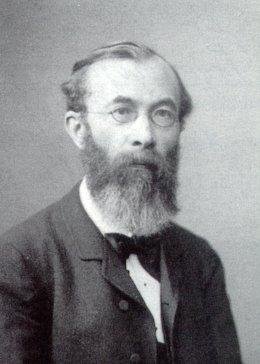Industrial-organizational psychology is a business oriented career-field that focuses on increasing productivity, profit, and human potential. This paper will include the following; A history of industrial-organizational psychology, followed by an explanation of the two major theories in the field. Psychology research methods for this field, and two academic journals will be investigated relating to the field. A detailed job description for an average industrial-organizational psychologist.
A. The history of Industrial-Organizational Psychology
Wilhelm Wundt and William James created the idea of applying psychology to business and organizations as early as 1879, but nothing concrete was written about the subject until the next century. Industrial-organizational psychology began when Hugo Munsterberg wrote the book Psychology and Industrial Efficiency in 1910. This book has become the backbone of this field of psychology. Even modern text on Industrial-organizational psychology only expands on this book and does not veer too far from the original model. As the field traded champions as more and more psychologists added to the original model there was a schism. Two different figures tore the field in two different directions (Kazi, T. B., 2012).
B. Taylorism VS. The Human Relations Approach
Fredrick Winslow Taylor started writing about his vision of Industrial-organizational psychology. In his idea of a perfect business, the workers did as little as possible and left the thinking to management. The worker was scheduled on a particular task that did not change, and everything he did was supervised by management. Every task was organized into a specific length to complete. This was considered “Taylorism” or “Scientific Management”. Unfortunately, some viewed this as treating workers as machines and was de-humanizing to the worker. Taylor was known to say that he viewed regular workers as stupid and lazy, and needed managing. He thought that smart people should keep track of workers with strict guidelines to keep the company profitable and happy.
Elton Mayo created a counter to Taylorism. He created the “Human Relations Approach”. This model was more focused on keeping the worker happy, so they would in turn do a good job at work, and make profit. This approach is kind of like the “country club” management style in the business world. In the human relations approach, workers would be free to make mistakes and less micro-managed. This would theoretically allow workers to create easier ways to do their job without fear of a schedule or failure. Critics of this version of the field say that it could not be proven to be effective, and the approach was too lax and allowed for ultimate failure (Kazi, T. B., 2012).
The major theories of industrial-organizational psychology centralize their ideas to analysis business practices, employees, and work positions. All industrial-organizational theory investigates business process and defines it, then seeks to predict and change it. Reports are sent to manager with findings to help make businesses decisions to improve efficiency, productivity, and profitability (McCormick, E. J., 1979).
C. Research methods used in Industrial-organizational Psychology
In Industrial-organizational Psychology all variables of research need to be quantified if any conclusion is to made from research. Gathering data qualitative subjects such as “workplace happiness levels” needs to be turned into a number for research. This can always be done in psychology through surveys. Surveys in this field can be done anonymously, but that may ruin correlation data due to the incompleteness of all employee involvement. Most experiments in this field are quasi-experiments because it is difficult to create random selection of participants and there are issue with internal validity. For example, the people of a business are being studied rather than people in general. There are many different research methods to gather data and test hypotheses for applying psychology on an industrial level.
This field of psychology is split between three different research collection methods. Correlation studies, quasi-experiments, and computational studies. Correlation studies are likely the most common. The may not include causation, but correlation may be all the information needed for a manager or owner of a business to make a decision. Classical experiments can prove causation to research, but a real experiment is nearly impossible in a work environment. Quasi-experiments are used because the environment can not be completely controlled. Workers go home every night, customers come and go in the environment. Other businesses outside the one in study may become involved (Hackman, R., & Oldham, G. R., 1976).
The observational model research method is the most un-intrusive and easy to conduct. Trained observers are hired to simply watch how business is conducted. Typically an average study has about one hundred observations to be considered adequate data. The amount of time to collect this amount of data is high, and the price to hire observers may be costly. This kind of study is conducted often as “secret shoppers” at stores or “secret critics” at restaurants. There is some concern that this may be an ethics violation if the participants are not fully giving their consent to be in a study when they do not even know they are in a study. Some States allow the use of cameras in businesses, but some psychologists and the American Psychology Association might deem this as not ethically sound practice.
The longitudinal model for data collection is a popular research method in industrial-organizational psychology. This model collected data over and over for a long period, generally six months to one year. Data is collected on survey and industrial data about subjects like; job satisfaction, hours worked, sick days taken, profits, loss, inventory used, ect. This model can also be used to track how long employees stay with the company, to track turnover rates of staff. This model is successful to track trends and make correlations to variables over time. Although, this model takes an enormous amount of time to complete. Some data is cheap to acquire every day, like industry data that is already being tracked by management for tax purposes. Some data may become costly if a surveyor or observer needs to be hired on a regular basis for a long period of time (Spector, P., 2001).
D. Academic Journals On Industrial-organizational Psychology
The British Psychology Society published a journal on “Resilience training in the workplace from 2003 to 2014”. In this study, they investigated fourteen other journals on the subject of resiliency training for the workplace. Their intent was to prove that this typeof training was successful in increasing the profit of a business by helping the worker gain skills to deal with stress. This kind of training would be conducted by or created by an industrial-organizational psychologist.
Many jobs are stressful due to the existence of problem solving, contingency operations, and dealing with failure and mishaps in business. Stress creates anxiety, fear, depression, and a list of other symptoms. These symptoms lead to workers becoming sick and leaving work, mistakes made during work, and overall productivity slow down due to health complications. Focusing on improving worker conditions is a part of being an industrial-organizational psychologist, and they do this through suggesting policy change or training. Resiliency training teaches workers to deal with stress and how to overcome it.
Common resiliency training plans include various tactics to help with mental stress. Calming exercises can be trained for dealing with stress. Coping mechanisms can be encouraged to deal with unavoidable failure. Positive mentality is promoted overall. In the military they teach emotional, physical, and spiritual resilience. Emotional resilience is to keep a level emotion during overly happy and overly sad times. This is to keep military bearing, or to stay professional at all times. Do not become weepy and frustrated when sad or manic and loud when happy. Physical resilience is to stay physically fit and eat healthy. People that live healthy lifestyles are less likely to suffer from the symptoms of stress or depression. Spiritual resilience is to have a hobby, religion, or interest that can be depended on when times are tough or monotony starts to set in. An industrial-organizational psychologist will assess a business to see if they are stressed and if it is effecting productivity in the businesses. Then they will create a plan to fix it.
Another way that an industrial-organizational psychologist can improve workers stress problems is to do research and suggest policy changes to management. A psychologist could do studies on the work hours and correlate it to a measure of job satisfaction. They may find that working over eight hours leads to stress that is reducing productivity, a psychologist would then suggest to management to not allow scheduling of workers for ten hour shifts. Research could even be done on environmental factors like lighting, noise, lack of noise, smells, confined space and other work situations. Then they could correlate that data to a measure of stress and find out what environmental factors are lowering productivity through worker stress. Then suggest a change of lights or whatever needs replacing.
This study proved through analysis of the fourteen journals, that Industrial-organizational psychology can improve the welling of employees to a business. After ten years of military service, I have received yearly resiliency training, due to the stress involved in my job and the rate of suicide in the military. Resiliency training increases productivity by increasing the mental health of the workers (Robertson, I. T., Cooper, C. L., Sarkar, M., & Curran, T., 2015).
A study was done by Performance Improvement Quarterly about “Industrial–organizational psychology and the practice of performance improvement”. This study was a complete overview of this psychology field and how it has helped employees over history. The focus of Industrial-organizational psychology is to not on individuals, but on business. The well-being of individuals is a residual result of helping the business.
Industrial-organizational psychology has four main goals based on this study. These are to describe, understand, predict, and change worker behavior. This is not a focus on helping people, but helping them exist in the business better. An industrial-organizational psychologist would help a person adjust to a new policy change, instead of counseling him or her on their personal problems with the change. Then the psychologist would seek to define, understand, and predict similar negative sentiment to policy changes in the business. This is to report findings to managers and owners of the business to keep production efficient and profitable, while avoiding conflict in business practice.
This study discusses in respect to the major theories in industrial-operational psychology. Taylorism as a whole has been proven wrong over the years as in-humane and not practical for productivity after dealing with the fallout of mental breakdowns from the de-humanization of workers. The human relations approach is not perfect, but it is more sustainable than the mechanical and micro-managing nature of Taylorism.
This study collected data about how other fields of psychology have influenced industrial-operational psychology. Functionalism created by Dewy, classical behaviorism by Pavlov, and Structuralism by Wundt in the 1880's contributed to this fields core principles. Behavioral psychology by Thorndike, Watson, and Skinner in the 1920's is key to human observation in business. Humanistic psychology from Rogers and Maslow in the 1930's defined the social interaction observation of business. Cognitive psychology from Miller and Chomsky in the 1950's helped this field develop their own theories on business problem solving. Positive psychology from Seligman in the 1990's helped develop some of the training tactics used in business.
This study concludes that this field of is the most impersonal branch o psychology. Industrial-organizational psychology does not collect data like biological brain data, individual behavior, or personal accounts. Instead business data, employee behaviorism, and collective sentiment is tracked. This field of psychology focuses on improving business instead of people, employee conditions may be improved as a residual reaction to this. This field is not completely sterile to helping people, but that is not the point of the research conducted. The individual worker is not paying an industrial-organizational psychologist, the manager and the owner are, so it is only natural that it will benefit the payee over the individual worker (Giberson, T. R., 2015).
E. Industrial-organizational Psychologist Job Description.
An Industrial-organizational psychologist integrates psychology to the business world. Psychology is used to simplify processes in a business to increase productivity. Psychology measures are used to test, hire, improve, and remove employees from a business. Data from industrial sales and services are connected with psychology science methods to determine trends and help businesses make decisions. Psychology is also used to improve marketing tactics to get more customers for a business.
Tasks associated with this career-field vary depended on what the company needs. If a company needs analysis of a business practice to improve, psychology can be used to create an experiment to conduct research. They will also collect data for research if needed. An industrial-organizational psychologist testifies in court for business lawsuits, because they will have so much data from previous research. In business they will create training programs for employees to increase productivity and maintain legal standards. They will also help with marketing and presenting products. A psychologist will mediate problems within the business, and do consulting work with outside businesses. A psychologist will analyze jobs and employee work performance to help managers decide to fire, hire, or change a job position.
The knowledge needed to be an industrial-organizational psychologists is wide. Management and business knowledge is needed. Human relations and communication knowledge is needed. Knowledge of how to train and create training material. Research psychology, social psychology, industrial-organizational psychology, behavioral psychology and general psychology knowledge is needed.
The skills required to be an industrial-organizational psychologist is social and analytical in nature. Basic social skills are needed like; active listening, oration, and other communication skills. They need to have analytical skills like; decision making skills, written comprehension, written expression, deductive reasoning, and creative problem solving.
A person with a massive amount of creativity and energy can succeed in this job. If an industrial-psychologist does not create enough reports, experiments, training, and mediation that positively impacts the business, they will likely be fired. This job is constantly justifying employment to maintain productivity within it's own department. This is a fluid job and unstructured, so a person that is lazy without direction, anti-social, likes a set schedule, or uncreative will find this job impossible to manage. This job will likely require travel and strange hours to conduct research or training, so some with outside work responsibilities may find it hard to manage. (Industrial-Organizational Psychologists, 2016)
G. Conclusion
In conclusion, the paper has reviewed the history of industrial-organizational psychology, two of the major theories in the field, research methods used, analysis of two academic journals on the field and a job description of the field. My ultimate focus in psychology was started and continued out of a love for science, human behaviorism, and to improve my own management skills in the military. I have noticed over the years that many business theories are based on psychology studies, and a knowledge of psychology perfectly connects with improving management and industrial skills.
H. Citations
Giberson, T. R. (2015). Industrial–organizational psychology and the practice of performance improvement. Performance Improvement Quarterly, 28(2), 7-26. doi:10.1002/piq.21191
Hackman, R., & Oldham, G. R. (1976). Motivation through the design of work: Test of a theory. Organizational Behavior and Human Decision Processes. 16. 250-279.
McCormick, E. J. (1979). Job analysis: Methods and applications. New York: AMACOM.
Robertson, I. T., Cooper, C. L., Sarkar, M., & Curran, T. (2015). Resilience training in the workplace from 2003 to 2014: A systematic review. Journal Of Occupational & Organizational Psychology, 88(3), 533-562.
Spector, P. (2001). Research methods in industrial and organizational psychology: data collection and data analysis with special consideration to international issues. In N. Anderson D. S. Ones & H. K. Sinangil Handbook of industrial, work & organizational psychology - volume 1: Personnel psychology (Vol. 2, pp. 10-26). London: SAGE Publications Ltd. doi: 10.4135/9781848608320.n2

DF8TAzAzV7xhvvS6Hr3Zg9Se12PNQrk6s2
 Source: Http://www.pixabay.com
Source: Http://www.pixabay.com
 Source: https://en.wikipedia.org
Source: https://en.wikipedia.org
 Source: Http://www.pixabay.com
Source: Http://www.pixabay.com
 Source: Http://www.pixabay.com
Source: Http://www.pixabay.com
 Source: Http://www.pixabay.com
Source: Http://www.pixabay.com
 Source: Http://www.pixabay.com
Source: Http://www.pixabay.com
 Source: Http://www.pixabay.com
Source: Http://www.pixabay.com
 Source: Http://www.pixabay.com
Source: Http://www.pixabay.com
 Source: Http://www.pixabay.com
Source: Http://www.pixabay.com
 Source: Http://www.pixabay.com
Source: Http://www.pixabay.com
 Source: Http://www.pixabay.com
Source: Http://www.pixabay.com
 Source: Http://www.pixabay.com
Source: Http://www.pixabay.com
 Source: Http://www.pixabay.com
Industrial-Organizational Psychologists. (2016). O Net Online, Retrieved from http://www.onetonline.org/link/summary/19-3032.00
Kazi, T. B. (2012). "A Brief History of Industrial Psychology." Inquiries Journal/Student Pulse, 4(01). Retrieved from http://www.inquiriesjournal.com/a?id=608
Source: Http://www.pixabay.com
Industrial-Organizational Psychologists. (2016). O Net Online, Retrieved from http://www.onetonline.org/link/summary/19-3032.00
Kazi, T. B. (2012). "A Brief History of Industrial Psychology." Inquiries Journal/Student Pulse, 4(01). Retrieved from http://www.inquiriesjournal.com/a?id=608

 Tip DogeCoin -
Tip DogeCoin -
Good post. Have an upvote.
Center-justified text is a little weird to read but if that's your style choice then so be it.
I wrote a style guide (link here) for STEM posts that you might find interesting (or not, up to you).
It's important to source your images otherwise the Steemstem curators might down vote you. Just a tip.
Thanks! I'll go source the images now, didn't even think about it
This post has received a 3.13 % upvote from @drotto thanks to: @ianmcg.
You have been upvoted by the @sndbox-alpha! Our curation team is currently formed by @jeffbernst, @bitrocker2020, @jrswab & @teach_blogger . We are seeking posts of the highest quality and we deem your endeavour as one of them. If you want to get to know more, feel free to check our blog.
This post has received a 3.41 % upvote from @steemdiffuser thanks to: @ianmcg.
Bids above 0.1 SBD may get additional upvotes from our trail members.